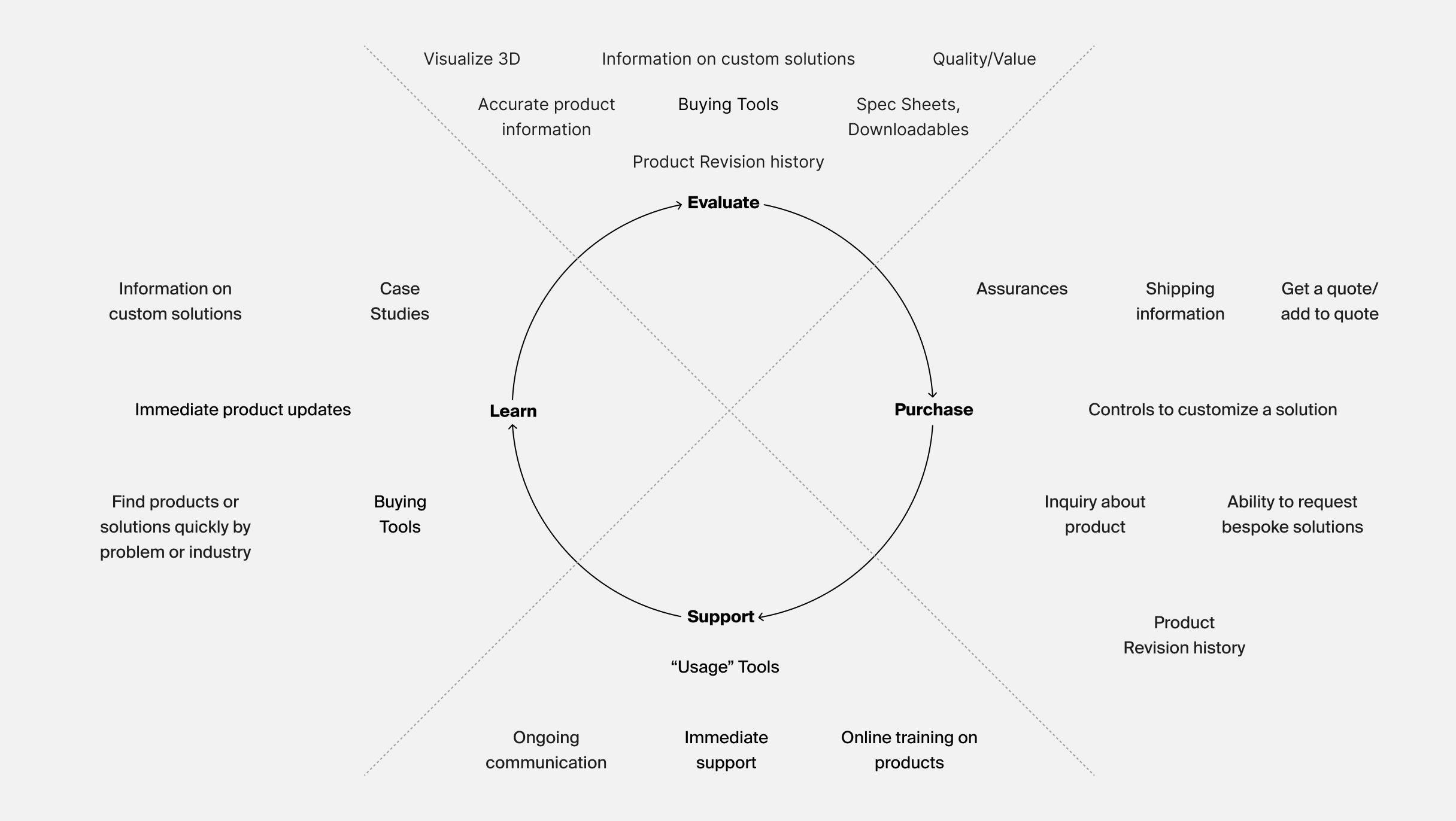Bee Access
Transforming the commerce experience for an "at-height" retailer.
Program
- Growth-Driven Digital Transformation
- 12-month engagement

After being acquired by Canopy Brands in August 2021, Bee Access set aggressive growth targets, looking to gain significant ground in North America’s $300MM suspended access market.
Bee Access sells its products primarily through a network of distributors, however, they understood just how important it was to level up their online experience in order to cater to next-generation access equipment distributors looking to use the site in new ways.
Bee tapped Thrive to help bring to life an effective sales-enablement platform designed to catalyze their next phase of growth.
- User research
- IA & taxonomy
- Content strategy
- Website design
- Website development

In order to truly understand how Bee could serve its customer base with a new online experience, we had to dive deep into the nuances and behaviors of their primary audience—access equipment rental providers—while also understanding their secondary and tertiary audiences. The first step in our discovery process was to conduct a series of qualitative interviews aimed at getting clarity around audience preferences, motivations, pain points, opportunities, inconsistencies, brand sentiment, and areas ripe for improvement.

After identifying Bee’s audience segments, our next step was to locate which opportunities existed for each particular segment. We synthesized our initial audience data set, which gave us a lens through which to asses the needs and motivations of each particular segment and highlighted brand, design, and UX opportunities for each group.
- Access Equipment Rental Providers
Accurate product information
Ongoing communication
Immediate product updates
Immediate support
Online education and training on products
Shipping information
Competitive pricing
Find products or solutions quickly by problem or industry
- Evolve the brand
- Increase usability
- Cohere the experiences
- Unify the information
- Tell a unique story
- Utilize technology
- Construction Trades
Accurate product information
Competitive pricing
Ongoing communication
Immediate support
- Cohere the experiences
- Unify the information
- Tell a unique story
- General Contractors
Ongoing communication
Online education and training on products
Information on custom solutions
- Tell a unique story
Working with the Bee Access marketing team, we staged a number of Zoom-based workshops in order to create a unique IA model, organizing all of Bee Access’s customers into four different quadrants based on their particular stage in the purchasing lifecycle. Using this updated IA model, we then created a new top navigation that served as a best-in-class example of a digital catalog site.

The newly reimagined Bee Access website needed to work much harder than its predecessor to showcase its extensive catalog of products, while also providing instant access to tools and resources that could help their customers do everything from calculating counterweights to reading complex product documentation. We did this by consolidating the information and introducing a simple taxonomy of products.


With more than 500 products in the catalog, it was apparent that we needed to unify Bee’s extensive product information by offering clear, concise, consistent, and accurate product descriptions. We also needed to create useful filters and faceted navigation to make it easier for customers to find, learn about, and evaluate products, while simultaneously introducing scale, contrast, balance, and a seamless visual hierarchy. Finally, each product needed to offer customers the same documentation.


One thing was certain with the Bee Access customer base: they needed access to comprehensive, technical product data—like weighted load, voltage, and weight—wherever they happened to be, whether it was on the jobsite or in the office. As such, we created a robust, one-stop resource section where customers could access specs, drawings, videos, and other pertinent product information.

After talking with a number of Bee’s customers, it became clear that we needed to meet clients where they were—on the job—with digital tools that could safely solve real problems for them. Longtime Bee customers wanted tools that could help them perform crucial calculations in the field. We knew from our analytics audit that the most popular page on Bee’s previous site was the counterweight calculator, so we set out to redesign the tool so it was fast, easy-to-use, and responsive. Additionally, we designed a voltage calculator. The result is a useful set of problem-solving tools that helps with customer retention by increasing interactions with the brand long after a sale.


Bee is a beloved brand to a loyal customer base, but its unremarkable digital experience had caused it to fall out of favor with a certain sector of customers and employees. Working with Bee’s marketing team, we endeavored to transform the web experience from one that employees were reluctant to rely on to one that enhanced every aspect of the company’s operations, from sales to customer service.
In order to get employees and customers reengaged with the brand, we helped Bee flesh out long-held brand characteristics such urgency, responsiveness, and ingenuity, using narrative to evoke emotion and inspire loyalty. To illuminate the characteristics that define them, we solidified a design system, along with messaging, that enlivened the brand through language and imagery while conveying even greater credibility.

